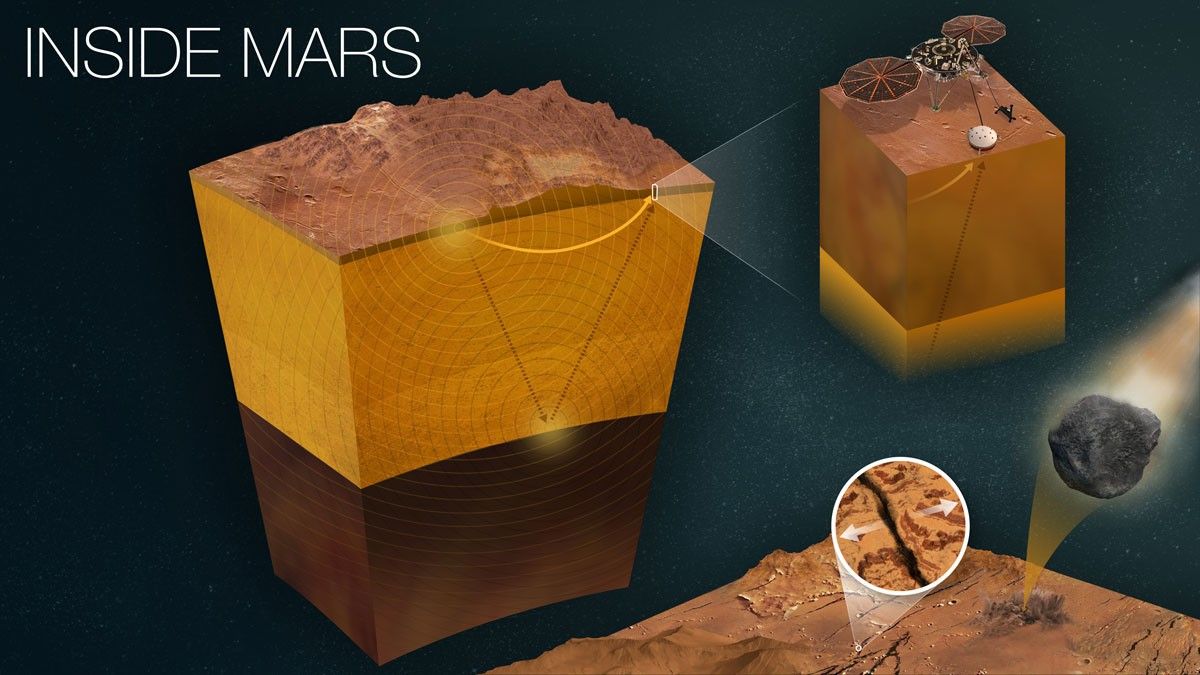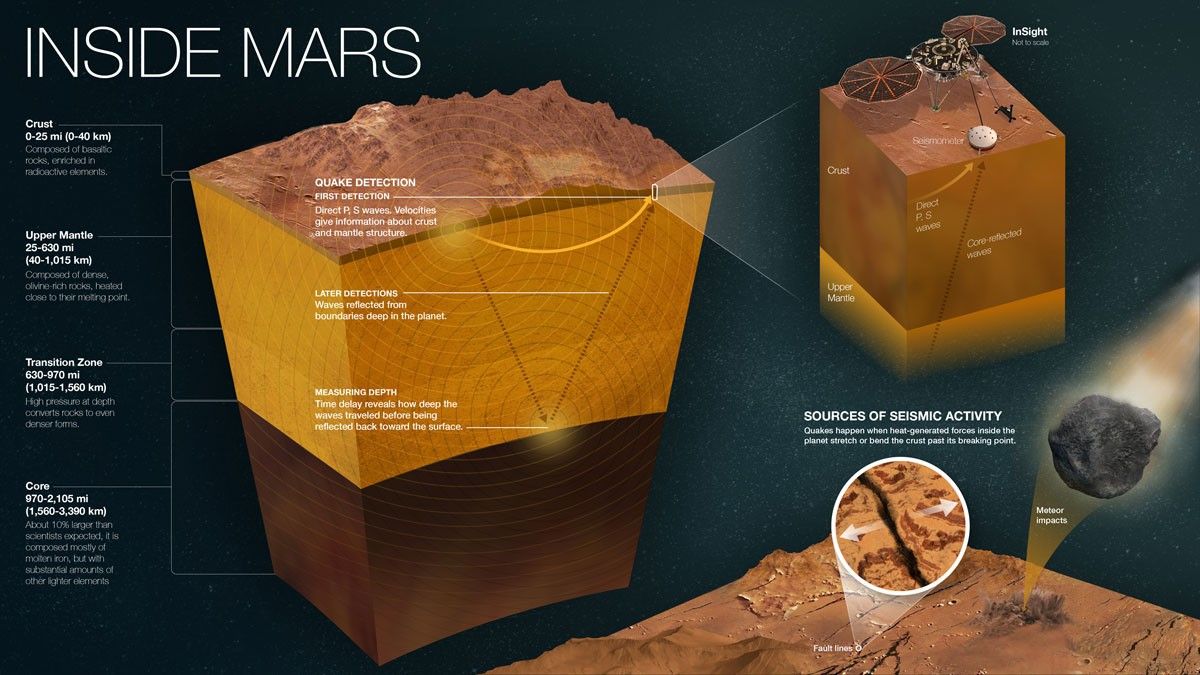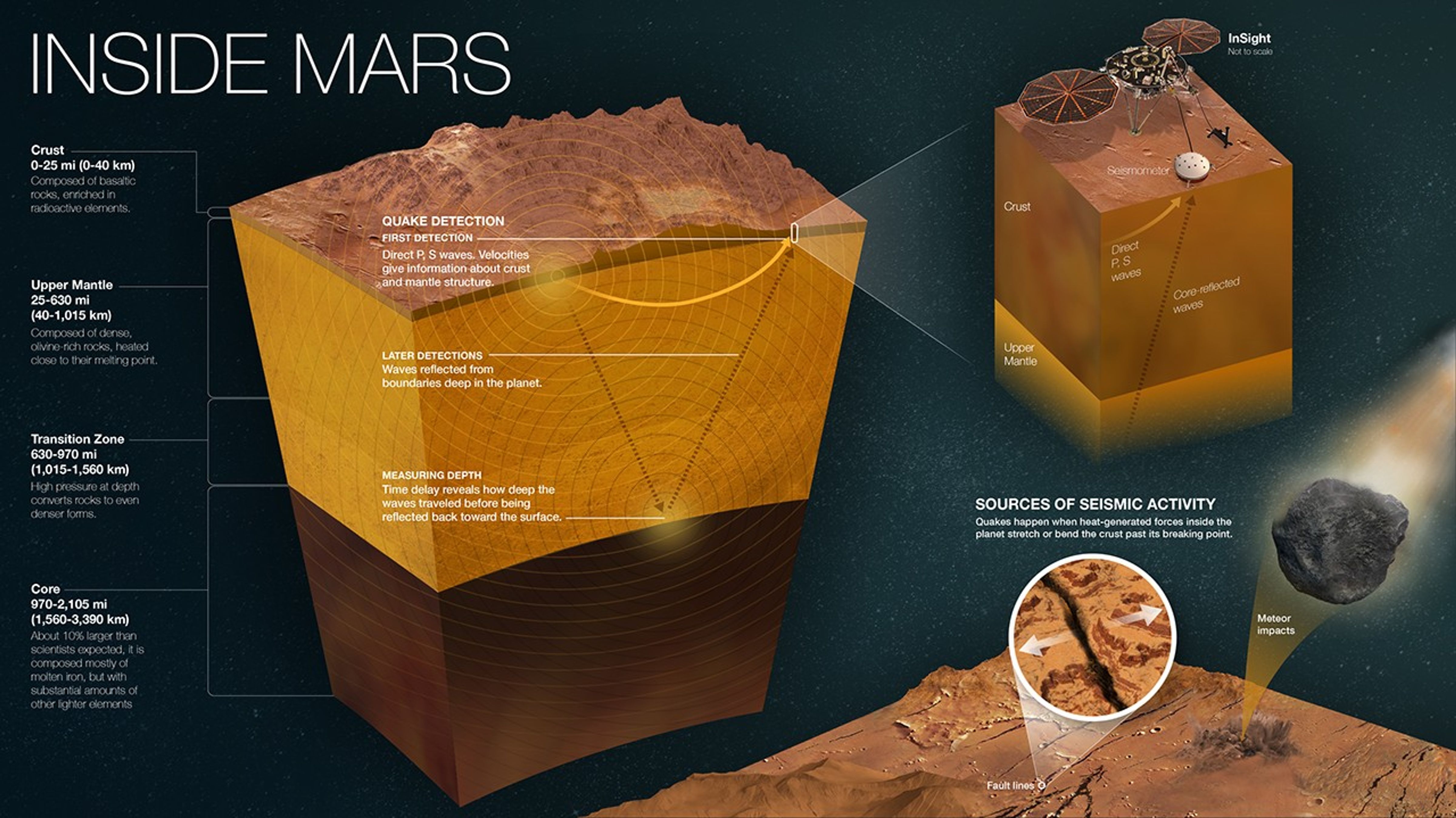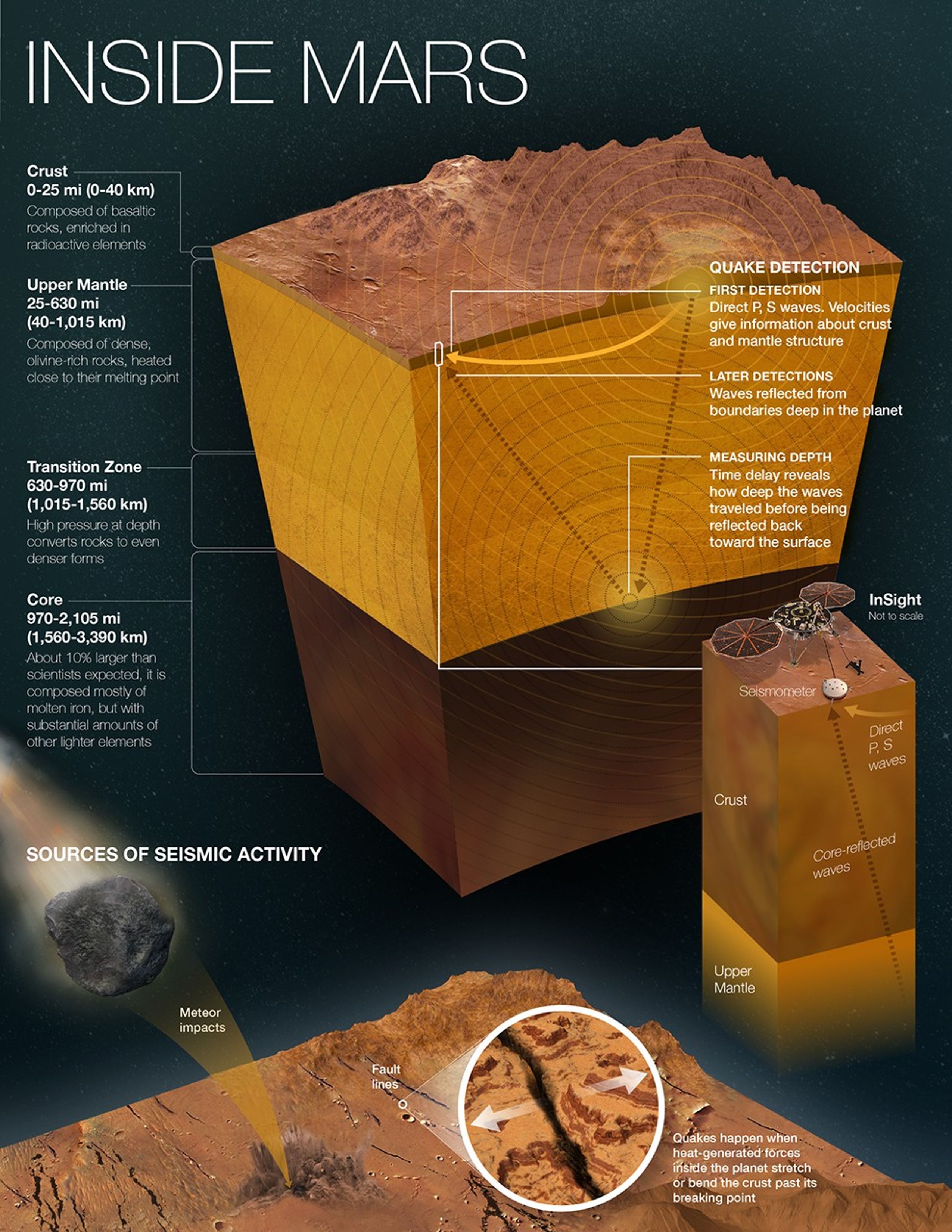How InSight Studies Mars’ Inner Layers
| Credit | NASA/JPL-Caltech |
|---|---|
| Language |
|
NASA’s InSight Mars lander uses a seismometer to study the inner layers of Mars. Seismic signals from quakes change as they pass through different kinds of materials; seismologists can “read” the squiggles of a seismogram to study the properties of the planet’s crust, mantle, and core.
This infographic shows those layers, and how InSight uses quakes to study them. It also shows a close-up of InSight and the major sources of marsquakes. Most quakes are created by heat and pressure inside the planet, which cause rock to fracture; another source is meteors striking the surface.
Figure A is a horizontal version of the infographic without a title but with some annotations added.
Figure B is a horizontal version of the infographic with a title and detailed annotations.
Figure C is a vertical version of the infographic with a title and detailed annotations.
JPL manages InSight for NASA’s Science Mission Directorate. InSight is part of NASA’s Discovery Program, managed by the agency’s Marshall Space Flight Center in Huntsville, Alabama. Lockheed Martin Space in Denver built the InSight spacecraft, including its cruise stage and lander, and supports spacecraft operations for the mission.
A number of European partners, including France’s Centre National d’Études Spatiales (CNES) and the German Aerospace Center (DLR), are supporting the InSight mission. CNES provided the Seismic Experiment for Interior Structure (SEIS) instrument to NASA, with the principal investigator at IPGP (Institut de Physique du Globe de Paris). Significant contributions for SEIS came from IPGP; the Max Planck Institute for Solar System Research (MPS) in Germany; the Swiss Federal Institute of Technology (ETH Zurich) in Switzerland; Imperial College London and Oxford University in the United Kingdom; and JPL. DLR provided the Heat Flow and Physical Properties Package (HP3) instrument, with significant contributions from the Space Research Center (CBK) of the Polish Academy of Sciences and Astronika in Poland. Spain’s Centro de Astrobiología (CAB) supplied the temperature and wind sensors.


































